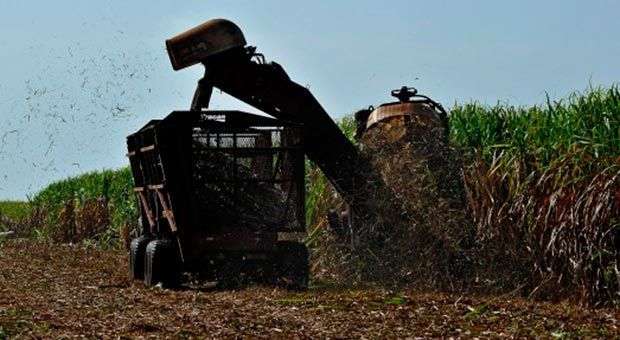Cuba’s government wants to boost the sugar cane business, excited by the rise of sugar prices in international markets. Vice President Jose Ramon Machado Ventura toured during the first weeks of November several eastern and central Cuba sugar mills, urging workers and managers to produce more.
But spirits are higher than the goals. Cuba intends to produce only a little more sugar in the period 2012-2013, and less than half of what was harvested during the crisis of the Special Period years.
In the 2012-2013 harvest, fields and sugar mills in Cuba will give 1.8 million tons, according to estimates by the AZCUBA state corporation.
No wonder there is talk of a “recovery.” The Cuban sugar industry was dismantled through the so-called Álvaro Reynoso Plan, a program of reductions and reorganization that wiped a hitherto vital part of the Cuban economy.
The interesting thing is that there are new players in the game: the sugar industry was opened to foreign investment. Brazilian Company of Works and Infrastructure begin running in conjunction with the AZCUBA the 5 de Septiembre Sugar mill, located in the province of Cienfuegos and nicknamed The Colossus of Rhodes. That foreign company is a subsidiary of Odebrecht, a transnational responsible for the construction of the port of Mariel.
A little fresh air will not come evil to the Cuban sugar industry, after being object (or rather victim) of a series of transformations suicide a few years before the boom in biofuels and ethanol from sugarcane, which fired the international prices of that product.
The purpose of the Brazilian alliance is purely on energy: the Odebrecht will install a bioelectrical plant that uses bagasse, a natural raw material from sugar cane.
There are ambitious plans to install bioelectric plants in two other sugar mills.
Cuba’s government says it wants to export more, but good sugar prices have barely been exploited: the industry’s exports were $ 388 million in 2011; an amount that year represented 6% of all exports of the country.
It has spread the idea that the island had its worst harvest of the last hundred years in 2009-2010, when the island produced 1.1 million tones. Only in 1905, with five times less population and the technology of the time, Cuba produced a similar amount.
It is little known that the 2006 harvest was also small, 1.1 million tons, and in the years following productions were just above that, but only in 2010 was officially recognized as a disaster.
The then Minister for Sugar, Luis Manuel Avila Gonzalez admitted shortcomings in his work and he was subsequently removed , to be replaced by his deputy , which would be the last Cuban Ministry of Sugar, Orlando Celso Garcia, who is now President of AZCUBA .
As part of a plan to reform and revival , the Ministry of Sugar became AZCUBA , in order to ” form a system capable of generating business with their hard currency exports to finance their own expenses,” in the words of Cuban President Raúl Castro.
In the “Guidelines “, the updating economic plan of the government of Cuba are included 4 points relating to the sugar industry, which in 2011 was beginning to improve what happened the previous year.
One proposed “to gradually increase sugar and cane derivatives production, ensuring proper organization and planning of the harvest and industrial repair (…)”
Little by little: that seems to be the strategy. Cuban Vice President Machado Ventura said in one of his trips that the sugar sector must grow from year to year in the production order, not spectacular leaps , to achieve superior harvests.
And so it will continue the ancient heart of the Cuban economy: not spectacular jumps, despite the jumps in prices.
The 2013-2014 harvest began on November 20 at the Commander Fajardo sugar mill in Mayaquebe province. Only 49 plants are being used, the same amount as in 2012. In that year, almost a third of the sugar factories started producing sugar late.
Successes and disappointments for next season are to occur. The AZCUBA management thinks sugar prices will increase in the future, but at the current pace, it will take Cuba a while to recover its sugar industry.
By Enero Andal
Photo: Alejandro Ramirez Anderson










